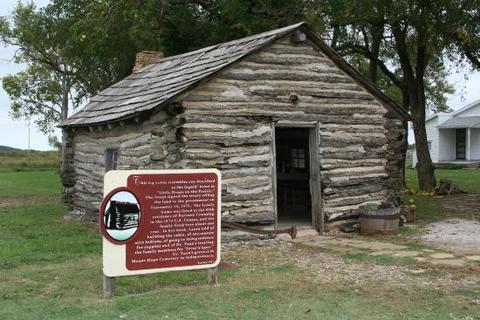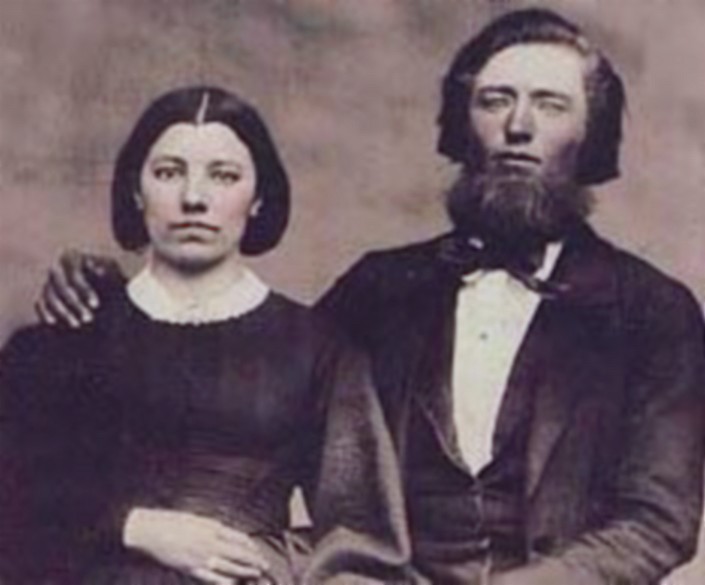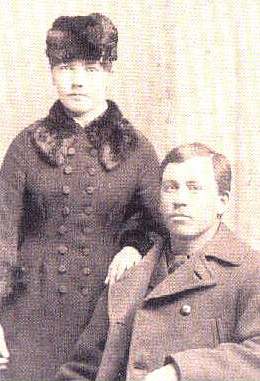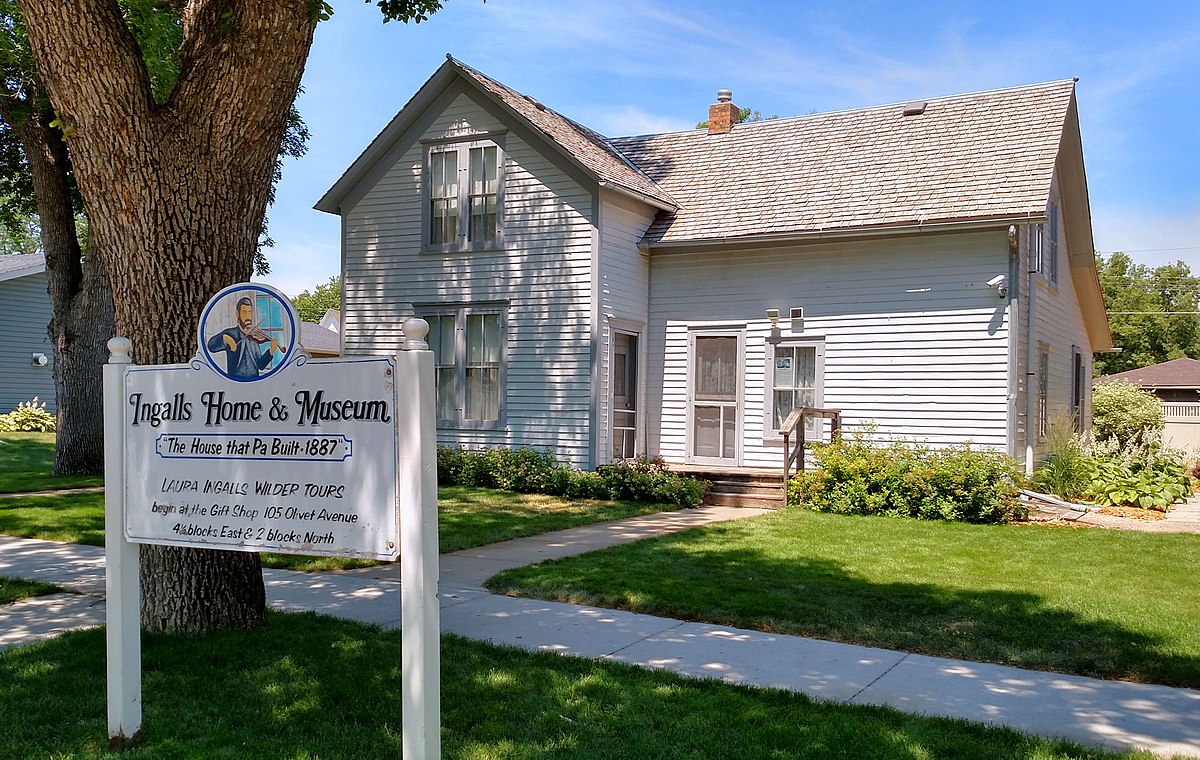A historian looks at the distinctive Midwestern identity of Wilder and her "Little House on the Prairie" books.
-
November 2020
Volume65Issue7
Editor's Note: We were devastated to learn that John Miller, a longtime professor of history at South Dakota State University, passed away after submitting the following essay to American Heritage. John was the author of two definitive books on Wilder, and will be sorely missed by the university community and the generations of students he inspired since joining the faculty in 1973.

In writing her much beloved Little House on the Prairie novels set on the late nineteenth century western frontier, Laura Ingalls Wilder aimed her books at young readers — readers who were approximately the same age that her protagonist (a fictionalized version of herself) had been at the time the action took place. It is noteworthy, however, that countless adults have discovered the volumes to be equally entrancing, many of them reading the entire series of eight books over and over again.
The books, which have sold between forty and sixty million copies in more than two dozen languages, are admired in equal measure for their emotionally compelling stories, their moral lessons and patriotism, and for the way they sum up an entire period of American history.
Wilder has been considered under many guises — as a pioneer girl, as a much beloved children’s author, as a memoirist, as a popularizer of history, as a journalist, as a moralist, and as a women’s advocate. Another way of thinking about her is as a regionalist, specifically as a resident of and commentator on the Middle West. Wilder’s Midwestern origins and residency were crucial to her identity and to her art, and they help us better understand who she was and what she wrote.
As she was growing up, Laura's family bounced around on the Midwestern prairies, hills, and woodlands of Wisconsin, Kansas, Minnesota, Iowa, and Dakota Territory before the latter became a state in 1889. By that time, she was twenty-two years old, four years after marrying Almanzo Wilder, the event occurring at the end of her final Little House book, which brought the series to a decisive conclusion.
Born in a log cabin in the Big Woods of Wisconsin near the little town of Pepin on the Mississippi River, Wilder moved along with her family, first to Indian Territory in southern Kansas; then back to Wisconsin; on to Walnut Grove, Minnesota; then to Burr Oak, Iowa; followed by a return to Walnut Grove and finally a move to De Smet in Dakota Territory.
From there, after a brief stay in the Florida panhandle and a short time living with her husband’s family in Spring Valley, Minnesota, Wilder and her husband established themselves on a small farm one mile east of the town of Mansfield in the south-central Missouri Ozarks. They remained there for the rest of their lives.
Her home in Missouri, where she lived for sixty-three years, placed her in a much different cultural environment than the kind she had grown up in. Indeed, the qualities that distinguished the upper from the lower Midwest made for huge differences in people's attitudes, values, practices, and social groups and even in their style of speech. Underlying these distinctions were the migration patterns that had brought people into the region in the first place. Leaving their cultural hearths along the east coast, groups and individuals traveled well-worn migratory paths to get to Missouri.

The familiar routes by which northeasterners deriving from New England, New York, and Pennsylvania moved into the upper Midwest, took them through the northern counties of Ohio, Indiana, and Illinois and the southern counties of Michigan, on into Wisconsin, Minnesota, and Iowa, and beyond them into Kansas, Nebraska, the Dakotas, and states further west. This pattern of movement closely aligns with the stories Wilder related about her family’s migrations except for the facts that they bounced back in an easterly direction a couple of times and, for a brief period, had lived in southern Kansas.
That upper Midwestern culture was heavily influenced by the New England and Middle States backgrounds of its settlers, leavened by infusions of immigrants from Canada, the British Isles, Germany, Scandinavia, and other mainly European places. The Ingalls family had a strong connection with the Congregational church (Laura’s parents were charter members of the congregation in De Smet, and her father, a skilled carpenter, helped build it), which was one of several mainstream Protestant denominations, along with Presbyterians, Methodists, Baptists, and Lutherans, that moved west across the continent into the upper Midwest.
Wilder’s discussion of the many social clubs and activities, which fed into a vibrant participatory culture in De Smet within years after the first settlers’ arriving there, made clear the communal and civic-minded orientation of the community’s residents. Spelling bees, singing clubs, oratorical performances, birthday parties, chicken pie suppers, dime sociables, county fairs, baseball games, horse races, rescue operations, hot stove discussions, traveling entertainers, church services—these were some of the myriad of community-oriented activities that drew people together to work and play, even as they maintained their strong sense of individuality and personal responsibility.
As Laura progressed through her later teen years, she eagerly became immersed in “a whirl of gaiety,” eventually leading to her marriage to Almanzo Wilder. Local self-government was also a central aspect of the surrounding culture. Laura’s “Pa” served as a justice of the peace, as described in her books, but he also held other offices in real life, and her family participated in the rituals of democracy, such as Fourth of July celebrations.
When times got tough in South Dakota and economic opportunities shriveled during the heavy drought years of the 1890s, moving to “the land of the big red apple” in southern Missouri at the age of twenty-seven proved to be something of a cultural shock for Laura Ingalls Wilder. Trying to eke out a living from the thin, rocky soil around Mansfield and taking on a series of jobs to supplement their income, the Wilders only gradually saw their economic fortunes improve.
Their only child was a curious, inventive girl who, while shamed by the poverty of the family’s circumstances, emerged as a precocious student on the way to a brilliant — if somewhat erratic — career as a writer who took time to help her mother along with her own writing career later on. Rose Wilder Lane was a person who could never be contained by the confines of a small town like Mansfield, or by a region like the Midwest, or even by the United States of America.
Before she entered her mid-forties, she had traveled to Paris, Istanbul, and much of the Middle East, lived two different times in Albania, and become something of a world citizen. An omnivorous reader and autodidact, she was a limitlessly ambitious thinker and writer. No religious orthodoxy for her; she preferred agnosticism and harbored a penchant for philosophical speculation. Professing to have been a friend of John Reed’s and to have flirted with communism and left-wing radicalism while living in Greenwich Village during her early thirties, she transitioned completely over to a form of right-wing extremism by her late forties. Having tried marriage once and rejected it, she determined never again to allow herself to be tied down to any man in such a way that would restrict her complete freedom of action. She was the ultimate nonconformist.
All of this was in stark contrast to her mother’s way of life. Laura Wilder always remained different in some ways from her neighbors and friends—more ambitious, more independent-minded, more mentally adventurous, and more interested in writing—but it would have been difficult for anyone to discern all that at first glance. One person I talked to in Mansfield who as a young woman had known Wilder when she was in her eighties referred to the writer as a somewhat “prissy” woman who, unlike others around her, always dressed up when she went into town on errands or to visit friends.

In Mansfield, she fitted herself into the surrounding culture as best she could, but her unique character set her apart, whether she was writing articles for the Missouri Ruralist or Little House books, organizing women’s study clubs, or running (unsuccessfully) for political office. As there was no Congregational church in Mansfield, she and Almanzo attended weekly Methodist services. People living around her in Mansfield and the southern Missouri Ozarks derived primarily from Kentucky, Tennessee, Virginia, and the Carolinas, not from New England, New York, and Pennsylvania. Religious congregations in Mansfield included the Methodists, Baptists, Cumberland Presbyterians, and, from time to time, one or more less prominent evangelical sects.
The region’s religious tendencies deviated from the prim and proper sort of services she had grown familiar with as a child and tended more toward emotional outpourings and hymn singing. Fifty miles to the west, the largest town in southwest Missouri, Springfield, was worldwide headquarters for Assemblies of God churches and was widely known for its gospel and country music radio stations. In Mansfield, Laura and Almanzo Wilder were able to continue with in their memberships in his local Masonic Lodge and in her Eastern Star group, while Laura also participated in a variety of bridge groups, study clubs, and other women’s organizations similar to the kind she had been familiar with back in South Dakota.
If numerous differences separated the upper and lower sections of the Midwest, the two were also connected to each other in a number of ways. Writing for the Missouri Ruralist, Wilder became acquainted with its publisher, Arthur Capper of Topeka, who had been a two-term governor before serving five terms in the United States Senate from Kansas. He had built up a little empire of nearly a dozen farm newspapers and other publications, stretching from Kansas to Pennsylvania. By the time of his death in 1951, his string of publications reached an estimated audience of five million readers, mostly in the Midwest. When Wilder wrote articles for the Missouri Ruralist, then, she was in a sense writing for a general Midwestern reader.
The region’s great historian, Frederick Jackson Turner of the University of Wisconsin, had been born in 1861, six years before Wilder, in the frontier town of Portage, 140 miles southeast of Wilder's birthplace of Pepin. Turner’s influential writings, which earned him two Pulitzer prizes, argued that the most significant features of American culture—democracy, individualism, and nationalism—derived largely from the encounter between westward moving pioneers and the wilderness environment in which they found themselves. The words Turner used to describe Americans in general and Midwesterners in particular included practical, inventive, energetic, exuberant, industrious, ambitions, courageous, egalitarian, optimistic, idealistic, hard-working, persistent, ambitious, creative, self-reliant, community-minded, patriotic, friendly, generous, hopeful, pious, good-hearted, and public-spirited, all of which could have applied equally well to Wilder’s pioneer neighbors as she was growing up in the Middle West.
More direct even than Wilder’s connection to Turner was her closeness in place and time to Willa Cather, a fellow Midwestern female writer. Born just six years apart and growing up in the transitional area between the Midwest and the Great Plains (Red Cloud, Nebraska, is located one degree of longitude to the west and approximately three hundred miles south of De Smet), Wilder and Cather both wrote about frontier farming and the small-town experience during the heyday of westward expansion into the region.
Cather, unlike Wilder, wrote for adult audiences and sophisticates, was more critical of small-town society, and devoted much of her writing to immigrant groups, which Wilder sometimes touched upon but in much less detail. Cather’s full range of writings extended far beyond the pioneer region and period of settlement, but two of her most famous novels—O Pioneers! and My Antonia—complemented Wilder’s Little House novels in numerous ways. Both impressively captured the grandeur of the natural environment, both illustrated the cooperative nature of successful pioneer societies, and both were adept in their detailed observations as well as in the employment of myth and symbol to confer universal meanings on things. Cather and Wilder were able to bring authenticity to their work because they both had lived similar experiences on the land. The strength of will necessary to meet the challenges and dangers of prairie life was formidable, and each of these remarkable women captured the process on the page.

Wilder’s connections to Turner and Cather have often attracted comment, but few people are probably aware of her geographical connection to another historical icon of the Midwest—Sam Walton, founder of the Wal-Mart store chain. The Bentonville, Arkansas, big-box retailer was entwined as much in Southern culture as he was in its Midwestern counterpart during most of his adult life, but his origins lay in the Middle West. Born in Oklahoma in 1918, he spent most of his growing-up years in several small towns in Missouri. The early expansion of his Wal-Mart store locations took place in large part in southern Missouri in communities not far from where Wilder lived in Mansfield. Laura and Almanzo Wilder, in fact, lived most of their adult lives in the heart of “Wal-Mart country.”
Laura Ingalls Wilder’s linkage to Walton’s story is not insignificant. The rapid expansion of the broiler industry in the Ozarks after World War II was preceded by Wilder’s own efforts to promote local chicken production earlier on. Her expertise as a chicken raiser, in fact, had been the initial impulse for the Missouri Ruralist to invite her to write a column for the farm paper. In southern Missouri, Wilder’s and Rose’s interest in promoting opportunities for women to broaden their horizons and to increase their economic opportunities coincided with increasing numbers of postwar women taking jobs in chicken-processing plants and in Sam Walton’s stores stocking shelves and working cash registers.
Even if the wages he offered were paltry, the work provided them with options not previously available. In addition, a common interest in conservative political ideology connected mother and daughter to Walton, for all were agreed on the undesirability of excessive government regulation and on the need to reduce government and to scale back taxes. Rose, even more than her mother, detested President Franklin Roosevelt and the New Deal. Her political treatise, The Discovery of Freedom, was published in 1943, the same year as Ayn Rand’s The Fountainhead, making the two, along with Isabel Paterson (who also published a right-wing polemic that year), the founding “grandmothers” of the modern libertarian movement. Lane spent much of the 1940s and 1950s writing articles and book reviews promoting the conservative cause and was actively involved in extending conservative ideas by educational means.
Another factor linking Wilder with Walton and the Wal-Mart enterprise was their close ties to small-town America. In 1946, at the insistence of his wife, Helen, Walton had abandoned his initial plan to join a college friend in opening a Federated Department store in St. Louis, deciding instead to locate all of his early stores in small towns. Proving his critics wrong, Walton demonstrated that a major market existed for discount variety stores in the small towns of the Midwest. Similar to Walton, a small-town boy, Wilder was a small-town girl, having lived in or near five different ones, two of them more than once.
Although wary at first of the small-town milieu, as she recounted later in her Little House books, Wilder learned as time went by to appreciate its virtues, becoming swept up in all the activities that De Smet afforded and the communal atmosphere surrounding them. More than anything else, the proverbial small town—be it Mark Twain’s Hannibal or Walt Disney’s Marceline, Missouri; Meredith Willson’s Mason City, Iowa; Sinclair Lewis’s Sauk Centre, Minnesota; Sherwood Anderson’s Clyde, Ohio; or James Whitcomb Riley’s Greenfield, Indiana—was the iconic symbol of Midwestern society, marking both the most attractive as well as the darkest sides of regional character. None of the places mentioned here, however, rank higher in the American mythology of community than Laura Ingalls Wilder’s depiction of her “little town on the prairie”—De Smet—which served as the setting for four of her eight children’s novels.
People today from all over America and the world arrive by the carload and busload to visit the Midwestern places that Wilder wrote about after filtering them through her imagination. Perhaps the realities of the sites don’t quite seem to match the expectations kindled by reading Wilder’s books; but the importance of these small towns lies more in the dreams and possibilities they inspire than in the mundane realities of their presence.

